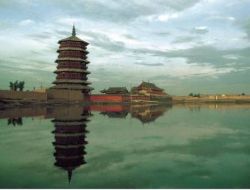Difference between revisions of "CIIC:Today's featured article/July 18, 2015"
From Wiki China org cn
imported>Ciic |
imported>Ciic |
||
| (2 intermediate revisions by the same user not shown) | |||
| Line 1: | Line 1: | ||
| − | [[File: | + | [[File:Yingxian Wooden Pagoda.jpg|thumb|250px|left|Yingxian Wooden Pagoda]] |
| − | ''' | + | The real name of the pagoda is Sakyamuni Pagoda of Fogong Temple in Yingxian County. Since it was built completely of timber, it has been known as the '''Wooden Pagoda of Yingxian County''' ('''应县木塔'''). Standing 67.31 m high, it is the only extant large wooden pagoda in [[China]] and also the tallest of all ancient wooden structures of the world. The pagoda was built in 1056 during the [[Liao Dynasty]].([[Wooden Pagoda in Yingxian County|More...]]) |
| − | |||
| − | |||
Latest revision as of 01:48, 20 July 2015
The real name of the pagoda is Sakyamuni Pagoda of Fogong Temple in Yingxian County. Since it was built completely of timber, it has been known as the Wooden Pagoda of Yingxian County (应县木塔). Standing 67.31 m high, it is the only extant large wooden pagoda in China and also the tallest of all ancient wooden structures of the world. The pagoda was built in 1056 during the Liao Dynasty.(More...)
